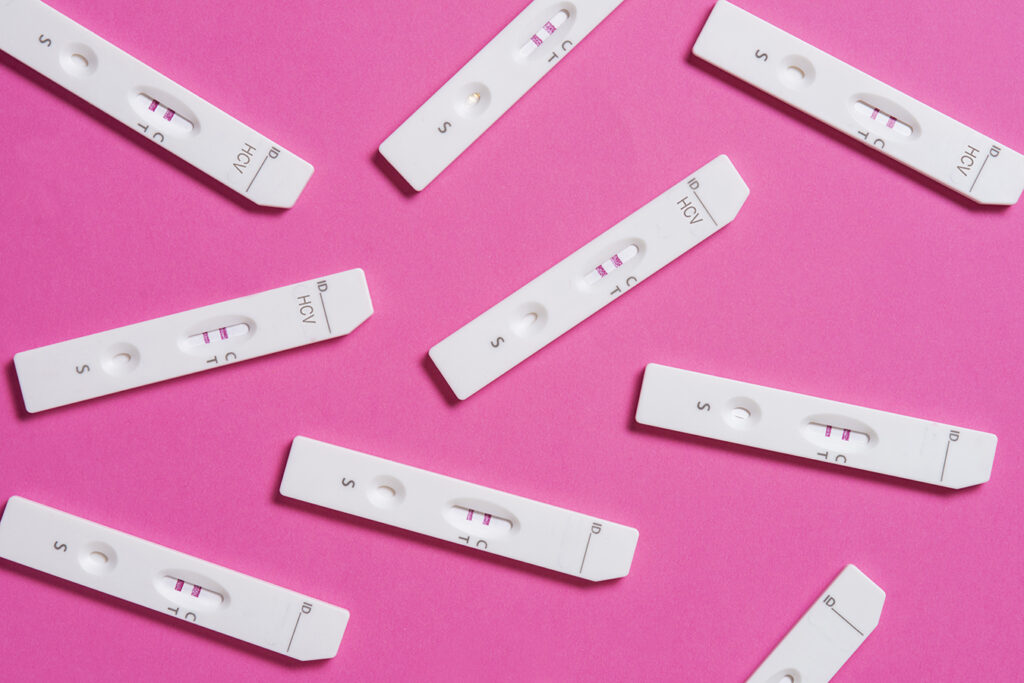Going beyond pregnancy and COVID-19, the world could someday soon come to rely on at-home tests for many diseases thanks in part to “AI”-fuelled improvements. Cell Reports Medicine reports that University of Florida (UF) scientists have used artificial intelligence tools to simplify a test that works for both hepatitis C and SARS-CoV-2, the virus that causes COVID-19. The simplified test happens in one small test tube in just a few minutes. With further refinement, it could come to doctor’s offices soon and, one day, even home tests that are as easy as a pregnancy test.
“We are trying to build a home-based test that is as reliable as a lab-based test,” said Piyush Jain, a UF professor of chemical engineering who led the latest research. “We are trying to make the test simple, eliminate the need for expensive equipment and provide results in just 10 to 20 minutes.”
To accomplish those goals, Jain’s group is innovating on a system known as a one-pot reaction, because the entire test happens in one small test tube. These tests, based on a technology known as RT-LAMP, can amplify small portions of a virus’s genome and produce a visible signal when it detects the virus. Reading these tests can be as simple as looking for a blue colour or using a small device that detects a change in the test tube, the sort of thing many readers will be familiar with from doing home rapid antigen tests (RATs) for COVID-19.

However, many RATs have a relatively high false positive rate, meaning they aren’t as reliable as they could be, so Professor Jain’s team are adding another technology, called CRISPR, to determine the difference between a false positive and a true positive.
CRISPR has become known in the biotech world for its ability to drive rapid genetic engineering improvements, which have the potential to one day cure inherited diseases by repairing genomes. Jain’s group relies on the CRISPR system’s ability to home in on particular genetic sequences. This means that only if the sequence for, say, the hepatitis virus is really present will the test show a positive result.
There remains one problem, however. The RT-LAMP technology requires a temperature of 65°C, while CRISPR works best at human body temperature. That difference makes tests far more complicated when they require two separate reactions—too complicated for at-home use. Jain’s team has been trying to bridge this gap by developing a CRISPR system that can withstand higher temperatures.
From a heat-loving species of bacteria, the researchers recently discovered a CRISPR enzyme that thrives at around 60°C, almost high enough. Jain’s group turned to AI tools to analyse this enzyme and discover how they could make it survive at 65°C. The AI programs suggested a few dozen changes to the enzyme, which Jain’s group tested in the lab. They eventually found four changes to the enzyme that successfully changed it to work at the ideal temperature.
We didn’t have to spend years, we could make these improvements in months
“It’s very challenging for any human to do this kind of analysis on an enzyme. We didn’t have to spend years, we could make these improvements in months,” Jain said. “With everything working at the same temperature, now we are able to combine everything in a true one-pot reaction, which we call SPLENDID.”
The team verified their simplified SPLENDID test on clinical samples from patients with hepatitis C or COVID-19. The test was 97% accurate for SARS-CoV-2 and 95% accurate for the most prevalent version of the hepatitis C virus found globally. Although it didn’t work well against other strains of HCV, straightforward changes to the test should quickly improve its accuracy, Jain says. His team published their findings in May in the journal Cell Reports Medicine.
The work was funded by the US’s National Institute of Allergy and Infectious Diseases at the National Institutes of Health in hopes of developing simple tests for viruses like hepatitis C so they can be identified and treated early, when treatments work best. Jain’s group will now work to refine the test, improve its ability to distinguish between hepatitis C strains and verify it in hospital settings in hopes of one day providing at-home tests as well.
Last updated 10 April 2025
More from:
Enjoyed this article? Subscribe to be notified whenever we publish new stories.
Subscribe for Updates








